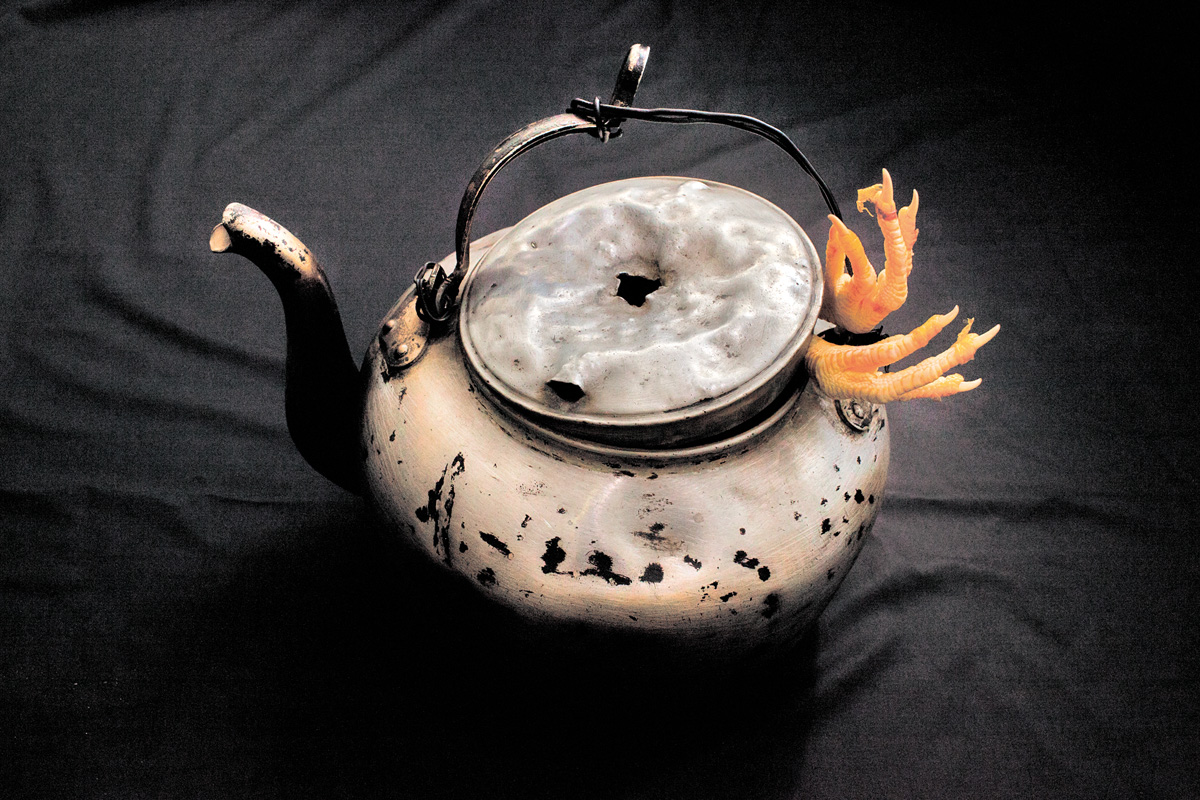Artist Kim Hak explores the phenomenon of memory in his most recent exhibitions throughout the city.
Memory: a recollection of the past; the faculty by which the mind stores and remembers information; the length of time over which a person or event continues to be remembered; the theme of artist Kim Hak’s work.
Hak currently has multiple exhibitions on display, both centering on memory. Alive, showing at the French Institute, involves an array of objects used during the Khmer Rouge regime – an old army canteen that belonged to his father; a metal breakfast bowl still used every morning by the owner today – to unearth the memories of those who survived the rule, the 40-year anniversary of which falls on April 17 this year.
The other, showing at Java Cafe & Gallery, titled Unity, is an intimate portrayal of a country coming together to grieve and remember King Sihanouk, who died on October 15, 2012. Instead of focusing on the ceremony taking place, Hak turned his camera to the people and captured their moments of reflection.
Hak hasn’t had any formal photography training. When he finished high school in 1998, studying photography wasn’t even an option – no courses were available. He remembers the exact happenings that sparked his desire to become a photographer.
In 1990, when moving from one house in Phnom Penh to another, the chaos that comes with packing uncovered an old box of black and white family photos. He spent all night sifting through the photographs and looking at the faces they had encapsulated. Hak would have been 9 or 10 years old at the time, and he remembers realising the link between photography and memory.
When speaking with the owners of the items he photographed for Alive, Hak expected the conversations to be painful and hard, but he found the tone to be bittersweet. A kettle was the inspiration for the exhibition. It has been in Kim’s family since before the time of the Khmer Rouge. It is old and worn but his mother still uses it every day. Hak said she laughed as she talked about the kettle’s history. During the regime his father became very ill and his mother cooked a chicken in the kettle for him to help build his strength. At the time, people were not allowed to eat such luxurious food items, and his father was so afraid of being found out that he didn’t dare eat it.
“I learned that, for them, it is kind of bittersweet. It’s bitter, but it’s sweet that they still remember. They’re lucky they survived and can still share with us,” Hak said.
The most difficult part of Hak’s Alive project is finding the objects; not much remains from before the Khmer Rouge regime. By April 17, he hopes to have 40 images to correlate with the 40-year anniversary. The exhibition is presented in a timeline, but there is a certain element missing: the people who fled to the borders and made their way to different countries. Hak hopes to make contact with some of these people and discover the precious objects they took with them.
It has now been almost 40 years since the Khmer Rouge rule, and Hak points out that some of the survivors have already died. He hopes to publish a photo book to commemorate the Khmer Rouge survivors and their memories.
“My idea is to let the objects dig out the memory and then document it and write it down. Maybe publish a photo book so the information and the memory will be alive, so it can be passed from the old people to the young generation.”
